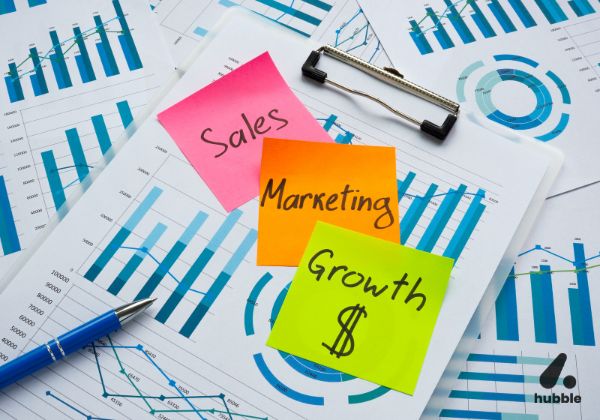Cognitive Biases Every Marketer Should Understand


Consumer behavior in India is shaped by far more than product features or prices. Businesses are applying behavioral economics in Indian marketing to understand how cognitive biases influence decision-making in Indian businesses and daily purchase decisions.
By recognising these biases, marketers can design smarter campaigns that connect with consumers’ natural thought processes and enhance employee motivation in workplace settings as well.
The Changing Landscape of Consumer Behavior in India
Indian consumers today make decisions quickly, often based on emotional responses and subconscious biases rather than deep analysis. Understanding these cognitive shortcuts allows businesses to create more effective marketing strategies that align with how people actually think.
Key trends shaping consumer behavior in India include:
- Heuristics in Indian Consumer Psychology – Mental shortcuts that influence quick decisions.
- Nudging Consumer Behavior in India – Small design changes that gently guide consumer choices.
- Emotional Marketing – Campaigns designed to trigger feel-good biases, such as nostalgia, pride, or belonging.
- Behavioral Data in Marketing – Using past behavior to predict and influence future actions.
Proven Behavioral Marketing Strategies Using Cognitive Biases
Marketers who understand cognitive biases can design messages and experiences that align with natural decision-making patterns. Here are 4 practical strategies:
1. Use the Anchoring Bias to Shape Perceptions
The first number or option a consumer sees influences how they value everything after it. Brands can apply this by:
- Showing the highest-priced product first to make others feel like better deals.
- Displaying original prices next to discounts to anchor perceptions of savings.
- Using premium packaging to set high-value expectations before the price is revealed.
2. Leverage the Bandwagon Effect
Consumers feel safer choosing what others have already chosen. To nudge this:
- Highlight bestsellers or products labelled as “Most Popular”.
- Share real-time stats like “500+ orders placed today”.
- Use testimonials from local influencers to drive trust.
3. Apply the Loss Aversion Bias
People are more motivated to avoid loss than to gain something. To apply this:
- Frame offers as “Don’t miss your chance” rather than just “Limited time offer”.
- Show what consumers could lose by waiting (like missing discounts or limited stock).
- Use festive urgency—“Pre-order before the festival rush starts.”
4. Trigger the Endowment Effect
Consumers value something more once they feel ownership over it. Brands can activate this by:
- Offering free trials or sample experiences.
- Allowing customers to customise products before buying.
- Running co-creation contests where consumers contribute ideas, giving them a sense of ownership.
Heuristics in Indian Consumer Psychology
Cognitive biases often work hand-in-hand with heuristics—the shortcuts people use to decide faster, shaping both consumer choices and employee recognition strategies. Key heuristics that drive Indian consumer decisions include:
- Social Proof Heuristic – People trust what others recommend.
- Familiarity Heuristic – Consumers prefer known brands, especially during festive shopping.
- Authority Heuristic – Expert or celebrity endorsements boost confidence.
- Price Heuristic – Higher prices are often linked with better quality in the consumer’s mind.
Nudging Consumer Behavior in India with Cognitive Biases
When brands understand biases, they can create small nudges that guide decisions without forcing them. Examples of effective nudges include:
- Highlighting fast-selling items during festivals to tap into scarcity bias.
- Pre-selecting popular product bundles during online checkouts.
- Using positive framing (“Join 10,000 happy customers”) instead of fear-based messaging.
- Showing customer reviews directly at the point of purchase, reinforcing social proof.
Future Trends in Behavioral Marketing Strategies in India
As brands become more data-driven, cognitive biases will play a bigger role in personalised marketing strategies. Key trends to watch:
✅ AI-Powered Bias Mapping – Using AI to detect which biases drive specific consumer segments.
✅ Bias-Based Personalisation – Creating campaigns that appeal directly to the cognitive shortcuts each segment relies on.
✅ Emotional Data Tracking – Measuring how consumers feel at key moments in their purchase journey.
✅ Real-Time Behavioral Nudging – Adjusting messages dynamically based on consumer actions during shopping.
How Hubble Supports Behavioral Marketing Strategies
Hubble helps brands in India apply behavioral economics directly into their campaigns, enabling smarter use of cognitive biases to influence decisions naturally.
- Consumer Behavior Dashboards – Identify how different segments respond to pricing, messaging, and offers.
- Nudge Automation – Deploy real-time nudges based on bias triggers like urgency, social proof, or familiarity.
- Bias-Based A/B Testing – Test how different cognitive biases influence conversions.
- Behavioral Loyalty Insights – Track how biases influence long-term brand loyalty, helping brands design smarter rewards programs.
Companies using Hubble design smarter behavioral marketing strategies in India that work with human psychology instead of against it. By combining real-time data, bias-driven nudges, and emotional insights, brands influence decision-making in Indian businesses while creating deeper consumer loyalty.
The future of consumer behavior in India belongs to brands that understand the mind behind every purchase—and Hubble empowers businesses to do exactly that.





















































































